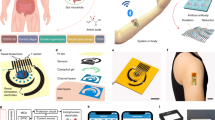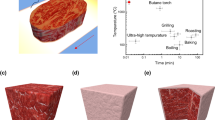Abstract
THIN-LAYER chromatography, first devised by Stahl1, is a very useful technique for the separation and identification of organic compounds on a micro-scale. Among its many advantages is its speed, requiring at the most about 90 min to complete one chromatogram. As yet, we are aware of only one report in the literature describing its use for water-soluble dyestuffs. Wollen-weber2 has described chromatographic systems for dyestuffs on the West German permitted list of food colours using cellulose powder as the thin layer. Here we describe the use of silica gel as an adsorbent for the thin layer chromatography of sulphonated dyestuffs.
This is a preview of subscription content, access via your institution
Access options
Subscribe to this journal
Receive 51 print issues and online access
$199.00 per year
only $3.90 per issue
Buy this article
- Purchase on Springer Link
- Instant access to full article PDF
Prices may be subject to local taxes which are calculated during checkout
Similar content being viewed by others
References
Stahl, E., Angew. Chem., 73, 646 (1961).
Wollenweber, P., J. Chromat., 181, 303 (1961).
Separation and Identification of Food Colours Permitted by the Colouring Matter in Food Regulations, 1957 (Association of Public Analysts, 1960).
Data Sheets on Food Colours. (W.H.O., 1957).
Author information
Authors and Affiliations
Rights and permissions
About this article
Cite this article
BARRETT, J., RYAN, A. Thin-layer Chromatography of Some Food Colours on Silica Gel. Nature 199, 372–373 (1963). https://doi.org/10.1038/199372a0
Issue Date:
DOI: https://doi.org/10.1038/199372a0
This article is cited by
-
Quantitative Bestimmung von Tartrazin in S��waren und Puddingpulvern
Zeitschrift f�r Lebensmittel-Untersuchung und -Forschung (1980)
-
The composition of Erythrosins, Fluorescein, Phloxine and Rose Bengal: a study using thin-layer chromatography and solvent extraction
The Histochemical Journal (1976)
-
Analytik kosmetischer Farbstoffe
Fresenius' Zeitschrift f�r Analytische Chemie (1972)
-
Recherche des colorants naturels et artificiels dans les aliments � l'aide de la chromatographie sur couche mince
Qualitas Plantarum et Materiae Vegetabiles (1968)
Comments
By submitting a comment you agree to abide by our Terms and Community Guidelines. If you find something abusive or that does not comply with our terms or guidelines please flag it as inappropriate.



